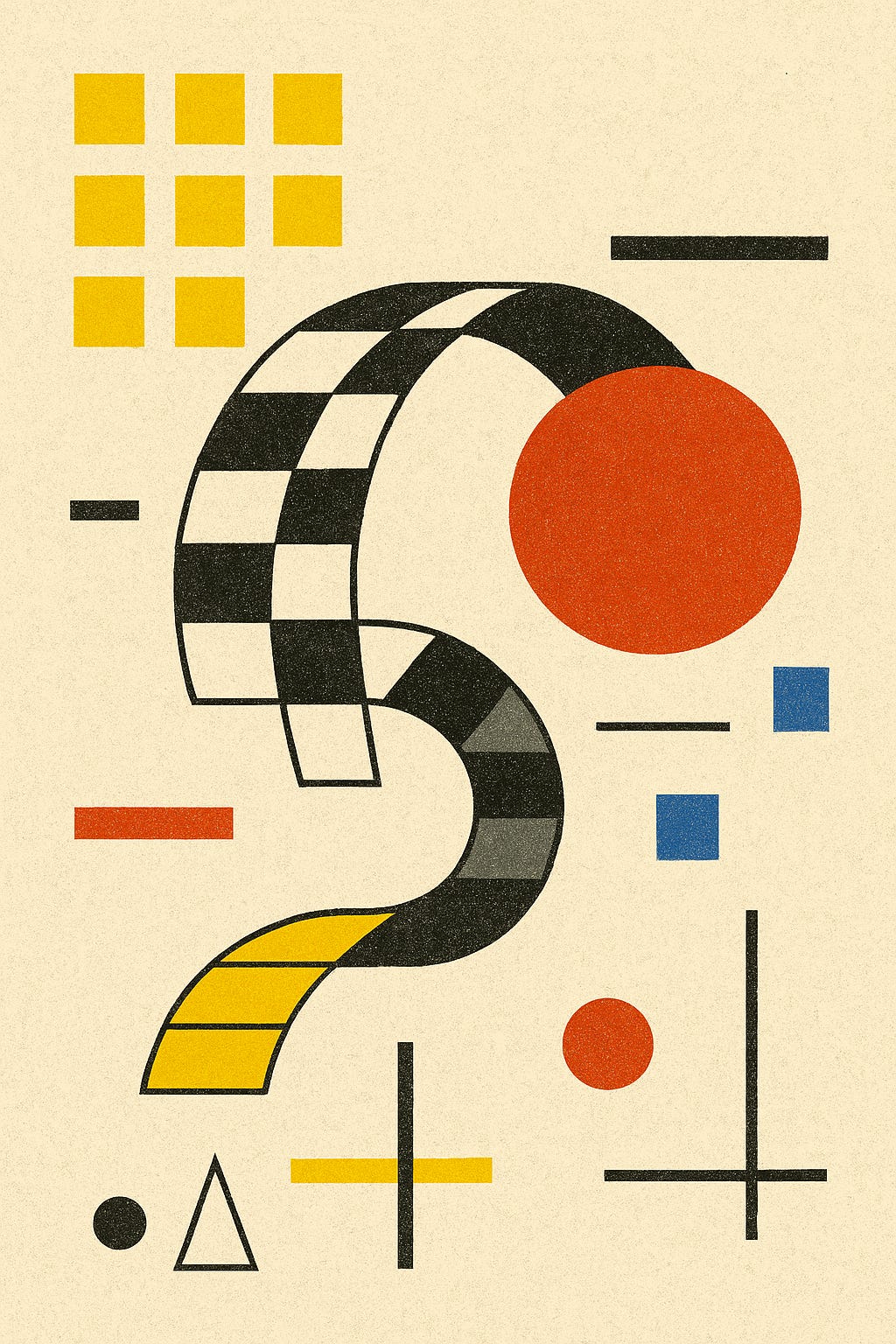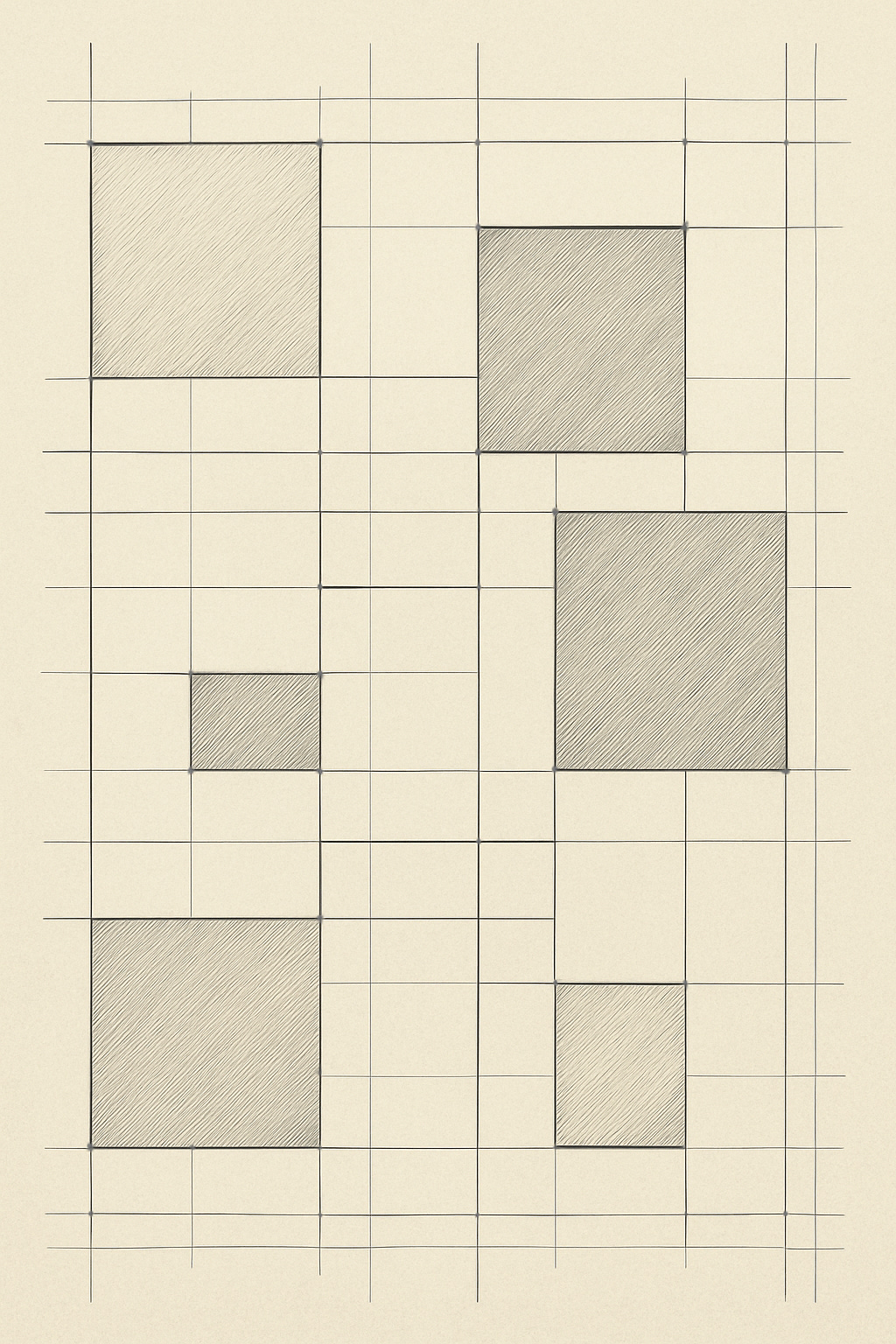Rhythm, Repetition, and Class
There's something deeply unsettling about how repetition functions in modern aesthetic consciousness. Walk through any contemporary art museum or listen to minimalist composers like Philip Glass, and you'll encounter rhythm and repetition elevated to the status of high art. Meanwhile, the actual repetitive labor that built our industrial world—the factory line, the domestic routine, the service economy's endless cycles—remains largely invisible, dismissed as mere drudgery. This paradox reveals something profound about class, aesthetics, and the distance required for beauty to emerge.
The Class Geography of Repetition
The relationship between social class and repetition operates on fundamentally different registers. For the working class, repetition is imposed by economic necessity: the assembly line worker performing the same motion thousands of times per shift, the cleaning staff following identical routines across identical office spaces, the service worker repeating scripted interactions with an endless stream of customers. Here, repetition is constraint, discipline, and often a form of bodily punishment that wears down joints, minds, and spirits over time.
For the upper classes, however, repetition becomes something to be achieved, contemplated, and aestheticized. The wealthy patron commissioning a minimalist sculpture celebrates the very rhythmic patterns that might drive a factory worker to despair. The art collector who prizes the repetitive structures in a Donald Judd installation experiences those patterns as meditative, sophisticated, worthy of contemplation—precisely because they are chosen rather than imposed.
This inversion reveals a deeper truth about how distance from necessity transforms experience. The further removed you are from having to do something, the more beautiful the choice to do it can appear. Physical labor becomes "fitness" when voluntary. Fasting becomes "intermittent fasting" or "cleansing" when chosen rather than imposed by poverty. Uncertainty, which causes genuine anxiety for those in precarious economic situations, gets reframed as "embracing the unknown" in self-help contexts marketed to the secure middle class.
The Modernist Fetishization
This dynamic reaches its most pronounced form in modernist aesthetics, where repetition becomes not just acceptable but actively fetishized. The timing of this development is crucial: the aesthetic celebration of repetition emerges precisely when repetitive industrial labor is becoming most alienating and dehumanizing. As Fordist assembly line logic transforms human beings into components of a larger machine, high culture begins to discover the beauty of mechanical rhythm.
Consider how machine-age repetition shows up across modernist expression: the Bauhaus movement's celebration of industrial forms, Steve Reich's hypnotic musical patterns, Andy Warhol's soup can prints, the rhythmic concrete forms of brutalist architecture. Each represents repetition as clean, purposeful, contained—stripped of the messiness, exhaustion, and human cost of actual repetitive labor. A Warhol print presents repetition as hypnotic and meditative, not as the grinding reality of performing identical motions for eight hours a day to survive economically.
There's something almost voyeuristic about this aesthetic transformation. Modernist repetition depends on viewing repetitive patterns from a position of safety and choice. The beauty emerges only when you're far enough removed from the necessity. The gallery visitor contemplating a minimalist installation experiences the pleasure of pattern recognition without the physical toll of pattern enforcement. The concert-goer listening to minimalist composition enjoys the meditative qualities of repetition without the economic compulsion that makes factory repetition feel like imprisonment.
The Folk Tradition and Its Evolution
This analysis becomes more complex when we consider working-class musical traditions that embrace repetition not as constraint but as collective power. The call-and-response patterns of blues, the cyclical narratives of folk music, and the repetitive structures of early jazz emerged from communities where repetition served real social functions: coordination, community building, coded communication, and resistance.
But here too we see the class dynamics at work. The evolution from blues and folk into free-form jazz represents a kind of liberation narrative that mirrors broader social mobility patterns. The movement from structured call-and-response—which served practical community functions—toward the deliberate breaking of those patterns in bebop and free jazz was pioneered by musicians often from working-class backgrounds who were increasingly creating art for middle-class and intellectual audiences.
The technical mastery required to play "freely" represents its own form of privilege: the privilege to have learned the rules well enough to break them meaningfully. Charlie Parker and Ornette Coleman weren't randomly abandoning rhythm; they were making sophisticated choices about when and how to subvert expectations. Their freedom from repetitive structure required such complete mastery of repetitive patterns that the freedom itself became a marker of cultural capital.
The Philosophical Complication
Both Søren Kierkegaard and Gilles Deleuze developed sophisticated theories of repetition that complicate this class analysis in revealing ways. Kierkegaard's concept of repetition as spiritual and existential breakthrough stands opposed to both mechanical working-class repetition and aristocratic aesthetic repetition. His "repetition" moves forward into the genuinely new rather than backward into memory or sideways into pattern recognition. It's neither economic necessity nor aesthetic luxury but a form of spiritual work that creates authentic selfhood.
Deleuze pushes this further by distinguishing genuine repetition from mere generality or habit. His repetition is always difference-producing—each iteration actualizes new potentials rather than simply reproducing sameness. It's creative and ontologically productive, explicitly opposed to the mechanical repetition that characterizes both industrial labor and its aesthetic celebration.
What's striking is that both philosophers valorize repetition specifically against the kinds being analyzed here. Their concepts of repetition reject both the compulsive patterns imposed by economic necessity and the aesthetic distance that allows repetition to be contemplated as beautiful form. This suggests that what gets fetishized in modernist aesthetics isn't genuine repetition at all, but precisely the mechanical, difference-erasing kind that authentic philosophical repetition should overcome.
The Aesthetics of Distance
The broader pattern reveals how aesthetic appreciation often requires a specific kind of distance—not just physical or temporal, but social and economic. The transformation of constraint into beauty, necessity into choice, survival into art, depends on being positioned outside the conditions that make those constraints necessary in the first place.
This distance isn't simply geographical or chronological. It's structural, built into the class relations that determine who experiences repetition as punishment and who encounters it as aesthetic possibility. The museum visitor, the concert-goer, the architecture critic—these figures can appreciate repetitive patterns precisely because their relationship to repetition is voluntary, temporary, and contemplative rather than compulsory, permanent, and survival-oriented.
Implications and Questions
This analysis raises uncomfortable questions about the politics of aesthetic appreciation. If modernist repetition depends on class distance for its beauty, what does this mean for claims about art's universal value? How do we account for the working-class origins of many repetitive art forms while acknowledging their transformation through bourgeois consumption?
Perhaps most importantly, this perspective suggests that aesthetic categories themselves might be more politically loaded than typically acknowledged. The distinction between high and low art, between sophisticated pattern recognition and mechanical routine, between chosen and imposed repetition—these aren't neutral aesthetic judgments but markers of class position and social privilege.
The modernist celebration of repetition, viewed through this lens, becomes less a breakthrough in artistic consciousness and more a symptom of class unconscious—a way of processing and sanitizing the violence of industrial repetition by transforming it into an object of safe contemplation. The rhythm becomes pure form precisely by being divorced from its material conditions and human costs.
Understanding this dynamic doesn't necessarily invalidate aesthetic appreciation of repetitive forms, but it does suggest the need for greater consciousness about the social conditions that make such appreciation possible. The beauty of repetition may be real, but it's also profoundly conditional—emerging only at a safe distance from repetition's more brutal realities.
Looking Forward: Digital Rhythms and Algorithmic Patterns
These questions become even more urgent as we enter an era where repetition takes new forms. Contemporary architecture increasingly relies on parametric design and algorithmic generation, creating buildings through repetitive computational processes that echo the mechanical patterns of industrial production. The glass towers of tech companies, with their endless grids of identical windows, represent a new kind of repetitive aesthetic—one that celebrates the digital processes that generate wealth for a technological elite while housing the very algorithms that automate away traditional forms of labor.
Similarly, digital aesthetics—from the glitch patterns celebrated in new media art to the repetitive loops of electronic music production—often derive their beauty from the computational processes that are simultaneously displacing human workers across industries. The Instagram grid, with its rhythmic pattern of posts, transforms the repetitive labor of content creation into an aesthetic experience for viewers while extracting value from the very repetition it displays.
As artificial intelligence and automation reshape the landscape of work, we may be witnessing a new phase of repetition fetishization. The algorithms that power our digital economy operate through massive, repetitive pattern recognition—yet these same processes are increasingly aestheticized in contemporary art and design. Understanding how class dynamics shape our appreciation of repetitive forms may be crucial for making sense of our relationship to these emerging technological patterns. The question remains: who benefits from the beauty we find in digital repetition, and whose labor does that beauty obscure?
—
This essay emerged from a conversation about the relationship between aesthetic appreciation and social class, exploring how distance from economic necessity transforms our relationship to repetitive patterns and structures.



